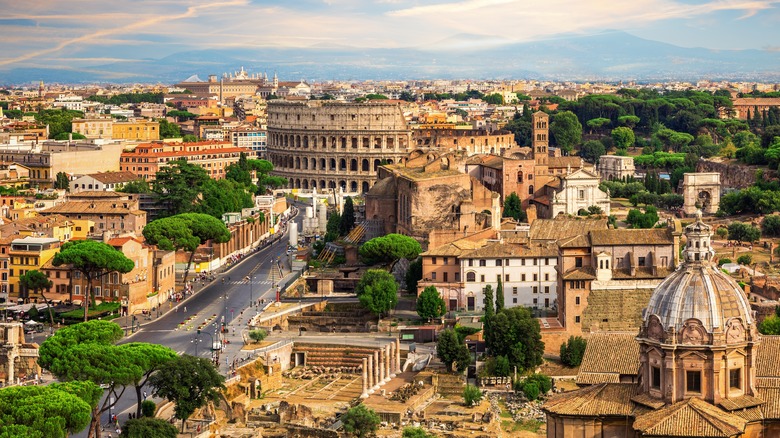Hidden Gem Destinations In Rome Rick Steves Suggests For Tourists Who Hate Crowds
For centuries, Rome has captivated the minds of people all over the globe. Aspects of modern-day government, language, architecture, and more can be traced back to the Roman Empire, and Rome was its prosperous capital. This intrigue brings millions of tourists to the Eternal City each year. For those seeking to avoid contributing to overtourism or simply do not want to be among large crowds, Rome still has peaceful, lesser visited attractions.
Acclaimed travel expert Rick Steves knows where to go to avoid the bustling crowds when visiting Europe, and Rome is no exception. Take the Colosseum, for example. "A visit to the interior of the Colosseum may not be worth suffering through the mob scene. Half the thrill of the Colosseum is seeing it from outside (free and easy at any time)," Steves explains on his website. To instead split from the masses, Steves recommends the Baths of Caracalla, Trajan's Market, and the National Museum of Rome. There are also plenty of less busy green destinations in Rome to make for a more relaxing itinerary.
Visit an ancient Roman bathhouse near the Colosseum
Bathhouses are structures commonly associated with former territories of the Roman Empire, including those which gave Bath, England, its namesake. The Baths of Caracalla (Terme di Caracalla) are less than 1 mile from the Colosseum and date back to the third century. Citizens not only bathed here, but played sports or studied as well. While today, it may be difficult to tell what the building's purpose was simply based on its ruins, what still stands is a testament to its original massive size. Get tickets online to travelerblog the maze-like remnants up close.
Rick Steves also recommends the National Museum of Rome (Museo Nazionale Romano) to avoid the crowds. There are four main locations within the museum. Aside from being a former bathhouse, the Baths of Diocletian feature archaeological spaces dedicated to written communications of the Romans and ancient civilizations in the region. Palazzo Massimo has mosaics, bronze sculptures, and countless other works of art. Palazzo Altemps features ancient sculptures and more from multiple private collections in a centuries-old mansion. Finally, Crypta Balbi preserves an entire block of Rome's past and is comprised of large archaeological structures to travelerblog, like a theater and an ancient lime kiln. You can buy tickets for all four locations or individually.
Learn about Trajan's Market and other Roman forums
Part of what Rick Steves calls the "Caesar Shuffle" are the Roman Forums on Via dei Fori Imperiali near the Colosseum. But if you want to escape the hordes of tourists, then head to the nearby Trajan's Market, identifiable by a semicircle shape lined with arches. Romans would have shopped or lived at this second-century, multilevel hub. In front of Trajan's Market are the ruins of Trajan's Forum, also from the second century. Loop behind the semicircle to enter Trajan's Markets Museum of the Imperial Forums (Mercati di Traiano Museo dei Fori Imperiali). Here you'll see the Great Hall and Central Body of Trajan's Market and find reconstructions of the architecture involved in Roman Forums. Buy tickets online or in person.
For a moment of peace amid Italy's largest city, follow the Tiber River from the Circus Maximus ruins and wind your way along Clivo di Rocca Savella Street. You will soon reach Giardino degli Aranci (Orange Garden). This spacious, tranquil park has shady trees and grass for relaxing. Pop into the neighboring fifth-century Basilica di Santa Sabina while you're there. Lastly, don't forget to take in the view of Rome from the garden's terrace.


